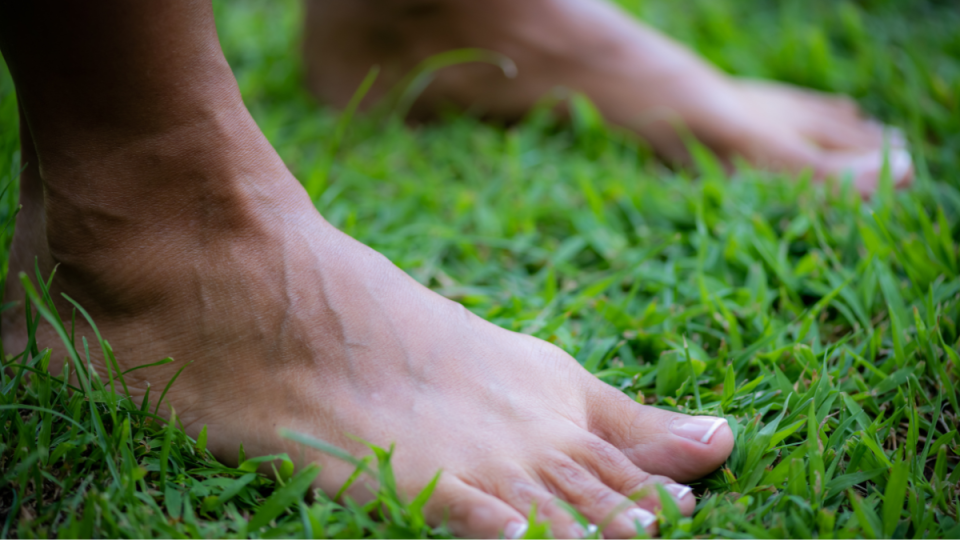The Italian Secret to Health And Joy? Dolce Far Niente — The ‘Sweetness of Doing Nothing’
In Italy, people cherish a way of life called dolce far niente (translated to the “the sweetness of doing nothing”). But what does that really mean, and how can giving yourself permission to kick back improve your health?
“It's about letting go of anxiety and the pressure,” says Sophie Minchilli, a native of Italy and author of The Sweetness of Doing Nothing. “It’s almost like reteaching ourselves to be bored. And in this case, boredom is not a negative thing. It's part of a broader picture of maintaining creativity and pushing aside everything that's overwhelming. This allows you to make space for real thoughts and enjoy the moment.”
Dolce far niente is also about slowing down and enjoying life’s little pleasures. “For me, a huge part of living the Italian lifestyle is finding pleasure in the ordinary — enjoying the small moments and living life to the fullest,” Minchilli adds. Here’s how adopting this Italian lifestyle can benefit you.
How dolce far niente improves your health
Ready to relax, unwind and get healthy? Here's what you can expect when you practice dolce far niente.
1. Admiring art boosts your memory
From the famed painting of the Mona Lisa to the incomparable opera singing of Luciano Pavarotti, Italians are renowned for their love of all types of art.
Now, a study in Creativity Research Journal reveals that folks who do nothing more than gaze at artwork, listen to music and enjoy other kinds of art for up to 3 hours a week have better episodic memory (helping you recall personal experiences) and working memory (needed to juggle lots of information at once). No matter what the medium, art stimulates the brain, keeping your mind sharp.
See also: Experts Share the 8 Best Brain Foods to Boost Focus, Prevent Memory Loss and More
2. Chatting dolce far niente style blocks headaches
If you’re like us, you’ve got a to-do list a mile long. But don't wait until you’ve checked off every task to finally unwind. Instead, copy Italians who take mini-breaks throughout the day to gab with pals. “Taking breaks is part of the Italian lifestyle,” Minchilli says. “And our breaks are always social. It’s about a quick chat with a friend, family member or work colleague.”
Research in Ergonomics reveals a welcome benefit of heeding this advice: You’ll be 50% less likely to suffer headaches as someone who’s all go-go-go. Stepping away from tasks for a few minutes to catch up with others mentally refreshes you. This lowers stress that triggers annoying headaches, helping you stay pain-free. (Tip: Learn how to tell if you have a migraine or tension headache, plus more easy ways to soothe the pain.)
3. Coffee strengthens muscles

Italians are famed for making time to enjoy their cappuccinos, espressos and other coffee-based drinks. “Coffee breaks are popular all over Italy, and it’s the most common kind of break,” notes Minchilli. Treat yourself to coffee breaks, too, and not only will you be boosting energy right away, but you’ll also be keeping your endurance high and muscles strong well into your 60s, 70s and beyond.
That’s the word from a study in the Journal of the American Medical Directors Association that found drinking 4 cups of java daily reduces the risk of frailty as you age by 46%. Coffee beans are rich in antioxidant and anti-inflammatory polyphenols. These compounds lower the likelihood of developing ailments that impact vitality and strength (such as neurodegenerative disease and muscle-weakening sarcopenia) so you stay vibrant and strong.
Prefer tea? The same study found that frequent tea drinkers also have a lower risk of frailty, though to a lesser extent, thanks to polyphenols in tea leaves.
4. A dolce far niente park break lowers blood pressure
While Italy has many bustling cities such as Rome and Milan, spending time in nature is a vital part of this country’s dolce far niente culture. “Italians are big fans of nature, whether it be gardens, mountains, lakes or the sea,” says Minchilli. Sometimes they go for a day or weekend, while other times they go for much longer, she notes. “When the weather is nice, people flock out of the city. Sometimes it’s just having lunch and sitting by the sea or by a lake.”
And “during the summer, people usually take almost a full month off to go enjoy nature,” she adds. Follow their lead by visiting the outdoors yourself (for instance, a national park or your own backyard) and you’ll be doing a big favor for your heart.
A review in The Lancet Planetary Health shows that folks who regularly spend time in natural settings have lower blood pressure. In fact, their systolic blood pressure (top number) is nearly 5 points lower and their diastolic BP (bottom number) is nearly 4 points lower than folks who stay indoors. The beauty of nature distracts you from worries, reducing anxiety. This relaxes blood vessels and allows for easier blood flow.
Related: 20 Easy Ways to Lower Your Blood Pressure Naturally — No Diet or Gym Required
5. Kicking off your shoes boosts joy

In Italy, slowing down and appreciating a pleasant moment in your day (such as the feel of freshly-cut cool grass on your bare feet) is a vital part of life. “Italians are experts in savoring the smaller moments,” observes Minchilli. “A huge part of living the Italian lifestyle is finding pleasure in the ordinary. These are the little moments I’ll remember when I’m older.”
Savoring these everyday moments is also a scientifically-proven way to dial up joy. And it’s even more effective when you use a variety of techniques to savor a positive experience. That includes focusing intently on it as it happens, telling someone else about it and vividly recalling details of it after it’s over. According to research in Personality and Individual Differences, each savoring technique elevates your mood in its own unique way. So when you use more than one, it lifts joy even higher!
6. A dolce far niente nap bolsters bones
Napping is so important to Italians that they used to shut down businesses to do it. “When I was a kid, shop owners would close their shop and go back home for lunch," Minchilli says. "And I remember my dad closing his office for a couple of hours, going home for lunch and taking a little nap."
Though times have changed and many companies now stay open, Italians still love to sneak in naps when they can. “Napping is one of my absolute favorite activities ever that I still do to this day,” Minchilli adds.
While a midday snooze is a great way to sweep away the cobwebs so you’re more alert, there’s a surprising bonus benefit: It strengthens your bones. Research in Calcified Tissue International shows that women who nap for up to an hour a day experience a significant increase in bone mineral density in their hips and spine.
One possible reason why: Short or restless sleep (which affects 40% to 60% of women over 50) can reduce growth hormone output, leading to bone loss. But napping increases growth hormone production, strengthening bones.
For more ways to ease stress and unwind:
Genius Tapping Trick Tames Chronic Stress + More Easy Ways To Reduce Cortisol
Anxious and On-Edge? Doctors Share the Best Supplements to Tame Stress Naturally
Goodbye, Stress! A Doctor Shares How To Increase Your Levels of Mood-Lifting Oxytocin Naturally
This content is not a substitute for professional medical advice or diagnosis. Always consult your physician before pursuing any treatment plan.

